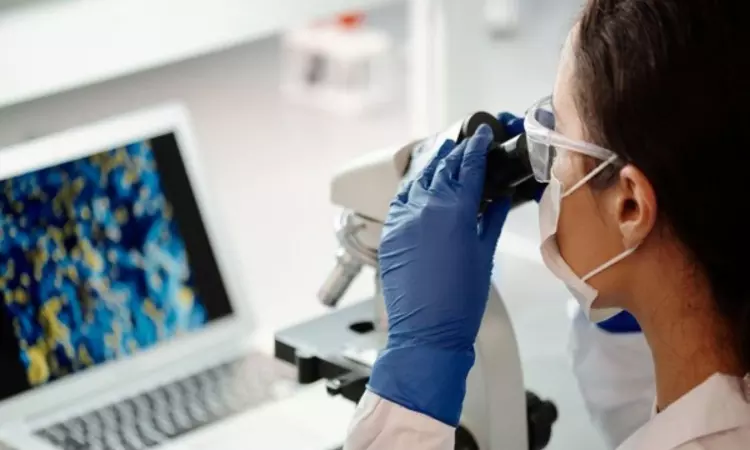Study reveals how ultrasound is promising technique for treating cancer
Cancer immunotherapy works by using or enhancing our own body's defence systems in the battle against cancer.

representative image
NEW JERSEY: Ultrasound is a potential cancer treatment tool. Unlike laser light, which is employed in photodynamic cancer therapy, ultrasonic waves may penetrate deep into tissue (up to 12 cm) to treat deep tumours while causing no harm to healthy cells. A team of researchers has created a sonodynamic cancer treatment based on semiconducting polymer nanoparticles linked to immunomodulators that can be triggered by ultrasound, as reported in the journal Angewandte Chemie.
Cancer immunotherapy works by using or enhancing our own body's defence systems in the battle against cancer. However, this entails overcoming the tumour cells' own defences against our immune system's T cells. Although this is possible with particular immunotherapeutic medications, their effect must be confined to the cancer cells themselves in order to avoid an overwhelming and destructive reaction from the immune system as a whole.
In photodynamic therapy, activatable nanomedicines are transported into cancer cells on nanocarriers which accumulate in the cells and are then released by a reaction induced by laser light. However, laser light cannot reach the deeper parts of the human body, meaning photodynamic therapy is only of use for organs close to the surface and does not provide a solution for deep, difficult-to-treat cancers such as pancreatic cancer. In contrast, ultrasound waves can penetrate into deeply located tissues with fewer side effects. Here, Kanyi Pu and a team of researchers from Nanyang Technological University in Singapore and Donghua University in China have used ultrasound for the first time for an effective sonodynamic treatment of orthotopic pancreatic cancer in a mouse model.
To make the sonodynamic immunomodulation molecular system, the team prepared nanoparticles from a specific semiconducting polymer that responds to ultrasound. Activated by ultrasound waves, it transferred its energy to molecular oxygen, from which singlet oxygen (a type of reactive oxygen species) was formed in the cells to induce immunogenic cell death and kill cancer cells. In addition, the polymer-or "semiconducting pro-nanomodulator"-carried two specific immunomodulators into the cells, which were released by singlet-oxygen-induced bond breakage after ultrasound activation. The sonodynamic treatment was exceptionally effective in mouse models, with full recovery being achieved for mice implanted with orthotopic pancreatic tumors. Following injection into the bloodstream, the team used imaging methods to observe the accumulation of the nanomodulators in tumor tissue. Treatment with ultrasound then activated the drugs and the tumors broke down within a few days.
In other, healthy tissue, the nanomodulators that had not been activated were harmless. "However, immune-related adverse events were observed in the liver after the injection of the free drugs," Pu says, acknowledging that the prodrug development is only at an early state. The team emphasizes that this sonodynamic method can be used to reach much deeper parts of the body than photodynamic therapy, hugely expanding the potential uses of immunotherapies that are activated at tumor sites.



